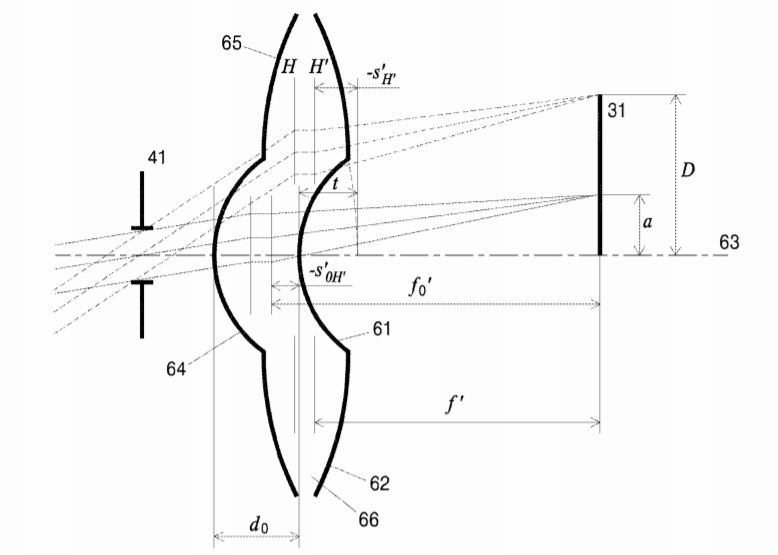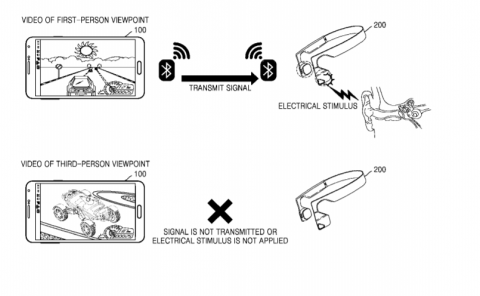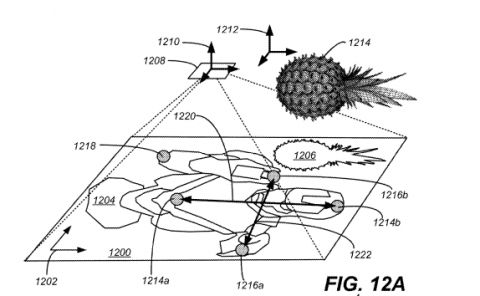Samsung Patent | Compound Lens and Display Device Having the Same
Patent: Compound Lens and Display Device Having the Same
Publication Number: 20190025475
Publication Date: 2019-01-24
Applicants: Samsung

Abstract
Provided are a compound lens and a display device including the same. The compound lens may improve image quality by providing a higher resolution in a central image region and a lower resolution in a peripheral image region. The compound lens includes a central lens portion and at least one peripheral lens portion, the at least one peripheral lens portion surrounds the central lens portion, the central lens portion has a first focal length, the at least one peripheral lens portion has a second focal length, and the first focal length is greater than the second focal length.
Background
The present disclosure relates to display technology, and more particularly, to a display device including a compound lens used to form images having different resolutions (i.e., different pixel densities), thereby enhancing a three-dimensional (3D) effect sensed by a viewer.
A virtual reality device generally includes a helmet or glasses and has an optical device in front of each eye of a user wearing the device. There is also a monocular device having a built-in micro display and having an optical device in front of only one eye of a user. In most cases, a related-art virtual reality helmet or glasses includes a display and a lens located in front of each human eye. The lens serves as an eyepiece that projects an image formed by the display on the retina of the human eye.
A well-known device has an optical device worn on the head of a user and located in front of each eye, a display, and a frame having a mechanical part for mounting and moving the optical device and display. The optical device refers to an eyepiece located in front of each eye of the user. A left-eye eyepiece including at least one lens projects an image formed by the half of the display on the left eye of the user. A right-eye eyepiece operates in the same way on the right eye of the user.
However, the above lenses are designed to provide approximately the same resolution in a central image region and a peripheral image region. In particular, the resolution of the peripheral image region is higher than the resolution of the human eye, while the resolution of the central image region is considerably lower than the resolution of the human eye. Therefore, these lenses generate an excessive resolution in the peripheral image region and an insufficient resolution in the central image region. Thereby, it reduces the sharpness of displayed images and reduces the feel of a 3D scene to a viewer.
Summary
Provided is a compound lens that may improve image quality by providing a higher resolution in a central image region and a lower resolution in a peripheral image region.
Provided is a display device that may improve image quality by providing a higher resolution in a central image region and a lower resolution in a peripheral image region.
According to an aspect of the present disclosure, a compound lens includes: a central lens portion having a first focal length; and at least one peripheral lens portion having a second focal length and surrounding the central lens portion, wherein the first focal length is greater than the second focal length.
The central lens portion and the at least one peripheral lens portion may have concentric focal planes.
The central lens portion and the at least one peripheral lens portion may include polymethyl methacrylate (PMMA), glass, or optical plastic.
The central lens portion may have a circular shape and the at least one peripheral lens portion may have an annular shape.
The central lens portion and the at least one peripheral lens portion may be concentrically arranged.
The central lens portion and the at least one peripheral lens portion may form a Fresnel lens together.
The central lens portion may include any one of a convex lens, a concave lens, a biconvex lens, a biconcave lens, a positive meniscus lens, a negative meniscus lens, and a lens having two randomly-curved surfaces.
The at least one peripheral lens portion may include any one of a biconvex lens, a biconcave lens, and a lens having two randomly-curved surfaces.
The central lens portion and the at least one peripheral lens portion may include an optical diffractive element or an optical holographic element.
At least one of the central lens portion and the at least one peripheral lens portion may be coated with a total reflection film configured to increase lens transparency.
The at least one peripheral lens portion may include a plurality of peripheral lens portions surrounding the central lens portion, wherein the plurality of peripheral lens portions may have a focal length fi where “i” is the number of peripheral lens portions and i=1, 2, 3, … n and satisfy f.sub.0>f1>f2>f3> … >fn where f.sub.0 is the first focal length of the central lens portion, and the central lens portion and the plurality of peripheral lens portions may have coincident focal planes.
According to another aspect of the present disclosure, a display device includes: a frame; a processor mounted in the frame and configured to select an image to be displayed to a viewer; a display attached to the frame and configured to display the image selected by the processor; and two compound lenses.
Each of the two compound lenses may include a central lens portion having a first focal length and at least one peripheral lens portion having a second focal length and surrounding the central lens portion, and the first focal length may be greater than the second focal length.
Each of the compound lenses may be installed at the position of the frame facing each eye of the viewer and may be configured to project the half of a displayed image on each eye of the viewer.
The display device may further include a first adjuster configured to adjust an interocular distance for the viewer by moving the compound lens perpendicularly to an optical axis of the compound lens.
The display device may further include a second adjuster configured to change a distance between the display and the compound lens to compensate for a refraction error of the viewer’s eyes by moving the compound lens along an optical axis of the compound lens.
The processor may be configured to compensate for image distortion provided by the compound lens by pre-distorting an image displayed by the display.



